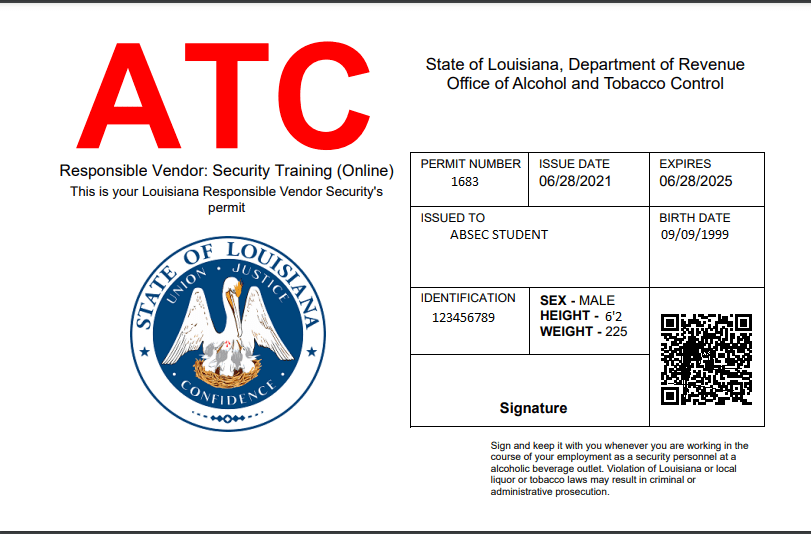
Louisiana ATC Everything You Need to Know: Understanding Violations and Consequences

As a business owner or individual involved in the sale or distribution of alcohol and tobacco products in Louisiana, it is essential to understand the different types of violations and the consequences that come with them. Violations of Louisiana ATC laws and regulations can lead to a variety of penalties, including fines, license suspension or revocation, and even criminal charges.
In this article, we will cover everything you need to know about Louisiana ATC violations, including the types of violations, the penalties for committing them, and tips for avoiding them.
Types of Louisiana ATC Violations
The Louisiana ATC enforces a wide range of laws and regulations related to the sale and distribution of alcohol and tobacco products. Some of the most common types of violations include:
Sales to Minors
One of the most serious violations is selling alcohol or tobacco products to minors. In Louisiana, it is illegal to sell or serve alcohol to anyone under the age of 21, and it is illegal to sell or distribute tobacco products to anyone under the age of 18. Violating these laws can result in severe consequences, including fines, license suspension or revocation, and even criminal charges.
Sales to Intoxicated Persons
Another common violation is selling alcohol to someone who is already visibly intoxicated. It is the responsibility of the seller to recognize when someone is intoxicated and to refuse service if necessary. Failure to do so can result in penalties such as fines, license suspension or revocation, and even criminal charges.
Unauthorized Sales
The Louisiana ATC also enforces laws related to the unauthorized sale or distribution of alcohol and tobacco products. For example, it is illegal to sell alcohol without a proper license or permit. It is also illegal to distribute tobacco products without proper documentation. Violating these laws can result in penalties such as fines and license suspension or revocation.
Other Violations
The Louisiana ATC enforces a variety of other laws related to the sale and distribution of alcohol and tobacco products. For example, it is illegal to serve alcohol after hours or to sell alcohol to someone who is already drunk. Other violations can include failing to check identification or failing to maintain proper records. The consequences of these violations can vary depending on the severity of the offense.
Penalties for Louisiana ATC Violations
The penalties for committing Louisiana ATC violations can be severe, and the consequences can vary depending on the type of violation and the circumstances surrounding it. Some of the most common penalties include:
Fines
One of the most common penalties for Louisiana ATC violations is a fine. The amount of the fine will depend on the type of violation and the severity of the offense. For example, selling alcohol to a minor can result in fines of up to $1,000 for the first offense and up to $2,500 for subsequent offenses.
License Suspension/Revocation
Another common penalty for Louisiana ATC violations is license suspension or revocation. This means that the business or individual involved in the violation will lose their license to sell or distribute alcohol or tobacco products. The length of the suspension or revocation will depend on the type of violation and the severity of the offense.
Criminal Charges
In some cases, Louisiana ATC violations can result in criminal charges. For example, selling alcohol to a minor can result in criminal charges, which can lead to fines, jail time, or both. Other violations, such as distributing tobacco products without proper documentation, can also result in criminal charges.
Tips for Avoiding Louisiana ATC Violations
As a business owner or individual involved in the sale or distribution of alcohol and tobacco products in Louisiana, it is important to take steps to avoid Louisiana ATC violations. Here are some tips to help you stay compliant with Louisiana ATC laws and regulations:
Training and Education
Make sure that you and your employees are properly trained on Louisiana ATC laws and regulations. This includes understanding the legal drinking and smoking age, recognizing signs of intoxication, and knowing how to check identification. The Louisiana ATC provides resources and training programs to help businesses and individuals comply with state laws and regulations.
ID Checking Procedures
Implement a strict ID checking procedure to ensure that you are not selling alcohol or tobacco products to minors or intoxicated persons. This can include requiring ID for every purchase, using an ID scanner, and training employees to recognize fake IDs. For more information on spotting fake id’s, check out this article: How to Spot Fake IDs – ABSEC LLC
Employee Accountability
Hold your employees accountable for their actions. Make sure that they understand the consequences of violating Louisiana ATC laws and regulations and that they are aware of the importance of compliance. Establish clear policies and procedures for handling violations and make sure that employees are aware of the consequences of non-compliance.
FAQs:
Q: What is the Louisiana ATC? A: The Louisiana ATC, or Alcohol and Tobacco Control, is responsible for enforcing state laws and regulations related to the sale and distribution of alcohol and tobacco products.
Q: What are the different types of Louisiana ATC violations? A: The different types of violations include sales to minors, sales to intoxicated persons, unauthorized sales, and other violations.
Q: What are the penalties for committing Louisiana ATC violations? A: The penalties can include fines, license suspension/revocation, and criminal charges.
Q: How can I avoid Louisiana ATC violations? A: You can avoid violations by implementing training and education programs, following ID checking procedures, and holding employees accountable for their actions.
Conclusion:
In conclusion, understanding Louisiana ATC laws and regulations is crucial for businesses and individuals involved in the sale and distribution of alcohol and tobacco products in Louisiana. Violating these laws and regulations can result in severe penalties, including fines, license suspension or revocation, and even criminal charges. By implementing training and education programs, following ID checking procedures, and holding employees accountable, you can avoid getting into trouble with the Louisiana ATC. Remember, prevention is key when it comes to Louisiana ATC violations. Stay informed and stay compliant to protect your business and your reputation.




